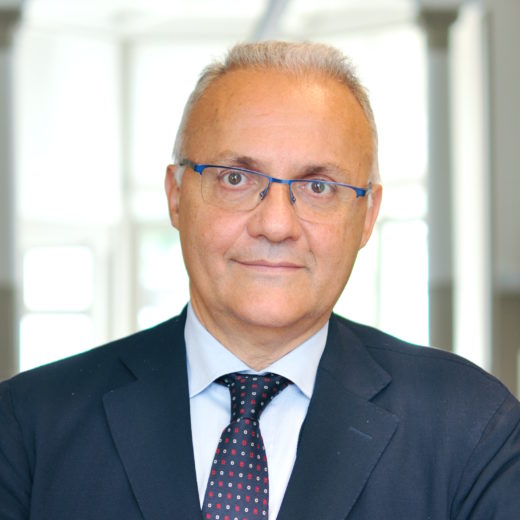The European elections have just ended. These elections were historical given the degree of participation in the vote; an electoral campaign focused on the European themes; challenges between pro-European and anti-European; and the paradoxical case of the English vote on the eve of Brexit.
The New Balance of power
The turnout was much higher than in the past and close to 50% (42.6% in 2014), strengthening the legitimacy of the new European Parliament. There was no great victory of the far-right anti-establishment parties or any other newcomers. The real winners of these elections are the Greens, especially in Germany, and the Liberals (ALDE and Macron’s party). The seats held by both the European People’s Party (EPP) and the Social Democrats (S&D) declined sharply. In France, Rassemblement National ended up slightly ahead of Macron’s party. In Italy, the League failed to meet expectations for a historic victory, halting at about 29% of the votes. The EPP and S&D together will no longer be able to have a majority (332 seats vs 376 required) so they will have to rely on the Liberals and/or the Greens. Keep in mind that in the European Council EPP, S&D and ALDE currently have a -very large- qualified majority in addition to having 58.2% of the seats in Parliament. Together with the Greens, the mainstream parties would total at 67.1% of the MEP seats. Far-right anti-Europeans currently represent 23.8% of seats (including the Brexit party), far Left anti-Europeans will be slightly under 10%. The wave of populist and anti-establishment Right has been contained, although the new Parliament will be much more fragmented and less pro-European than in the past.
The new Parliament: more fragmented and less pro-European
The new European Parliament will be more fragmented and far less pro-European than the previous one, with a larger number of anti-establishment right-wing members and some non-aligned euro-sceptics. However, the composition of the European Parliament does not paint the full picture of the balance of power that will steer European politics and policies over the next five years. We also have to look at the projections of future coalitions and majorities, which will also be key for appointing the ‘top jobs’, especially the President of the European Parliament, the President of the Commission and Commissioners. The President of the Commission will be “proposed” by European leaders, while Commissioners will be “proposed” by national governments. It is not clear whether the Parliament will be split into the traditional Left-Right political families, or in a new divide between pro-and anti-EU integration which has become more visible over the past five years. This new rift would have enormous implications in the functioning of the EU but is extremely difficult to forecast. A Parliament divided and fragmented would effectively leave more room for intergovernmentalism at the expense of the so-called ‘Community method’. It would become increasing problematic in the legislative procedure when the Parliament is acting as co-legislator together with the EU Council without any political direction. To make things even more complicated, the affiliation of some national parties is not always clear and their positioning on specific issues may depend more on national divides than in the past.
Repercussion of elections results in the national countries
In Italy, Salvini’s leadership failed to impress. He may still pull the plug from the government if he feels confident enough in getting an outright majority by siding with Fratelli d’Italia (Brothers of Italy) and part of Forza Italia (without Berlusconi). More likely, the election outcome will suggest a continuation of the current government coalition with the 5SM albeit with a sharp rebalancing of power. In France, Marine Le Pen overtaking Macron will only increase the pressure on the current government but there is no immediate risk of instability. In Germany, the losses suffered by two governing parties (CDU/CSU and SPD) increases the possibility of a shift in government. Spain just went through elections, and the difficulties in forming a government coalition will not get any easier. The UK electorate is increasingly polarised, and the spectacular outcome of the Brexit party increases the risk of a hard Brexit.
Some observations about the next key top European office designations
The European Parliament may try to nominate the European Commission President, the so-called Spitzenkandidaten’ (the lead candidate put forward by European political groups). This would put Manfred Weber in the President seat given that the EPP came in first in the elections. However, the political bargaining for the position of President of the European Commission and other key positions seems more likely than the adherence to the Spitzenkandidaten-process followed in the past. There could be a potential clash between the Parliament and the European Council which may want a strong say on all appointments. Another potential scenario would be around Angela Merkel, she might eventually put forward her candidacy to the Presidency of the Council. She would effectively have no rivals but would also automatically rule out Weber (Commission) and Weidmann (ECB) from their candidacies. In this case, Villeroy de Galhau will likely get the top position at the ECB and Michel Barnier or Sylvie Goulard at the Commission. Barnier, the current Brexit lead negotiator, would be a top candidate for the position of President of the Commission but he may not have the support of Macron and the EPP. Margrethe Vestager could also be a leading contender as ALDE made significant gains in the elections. Moreover, as the S&D remains kingmaker in forming a coalition in Parliament, it would be able to claim at least one of the three/four key positions. The deeply-divided far-right, with less than 25% of the seats in Parliament, is unlikely to have any say in appointments and in the future legislative process. The top jobs need to keep gender-balance in mind and a fair representation of Nordic, Eastern/small and peripheral countries. The key decisions will probably be taken at the 20-21 June European Council but considering the current fragmentation, negotiations could last even longer.
